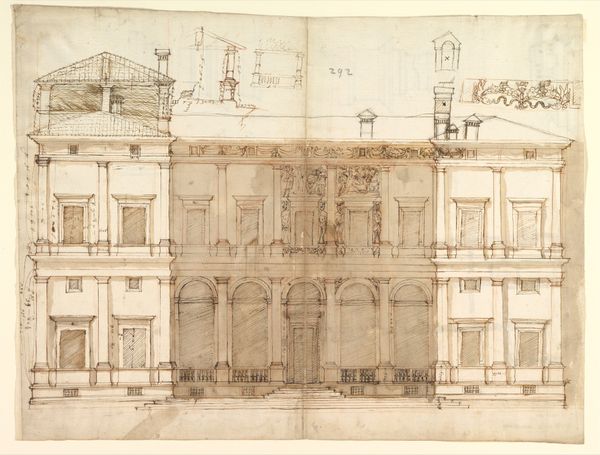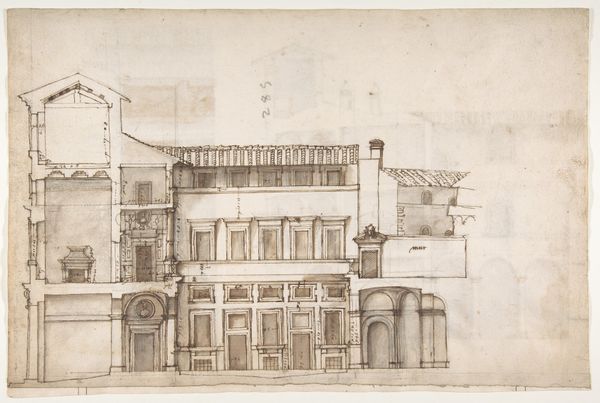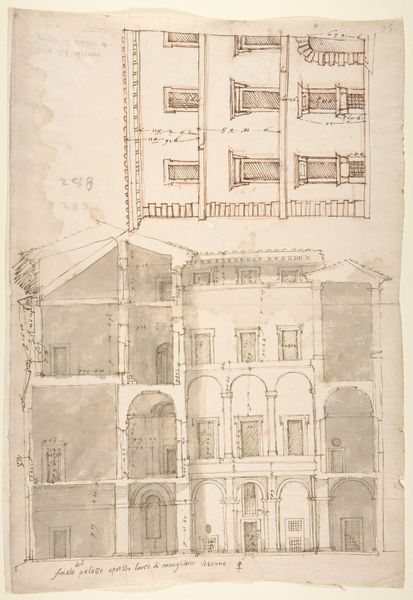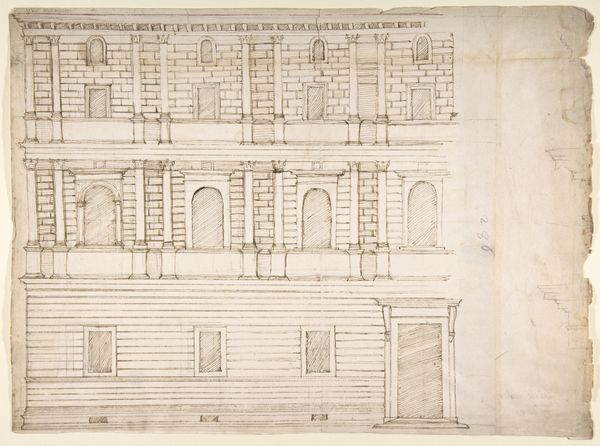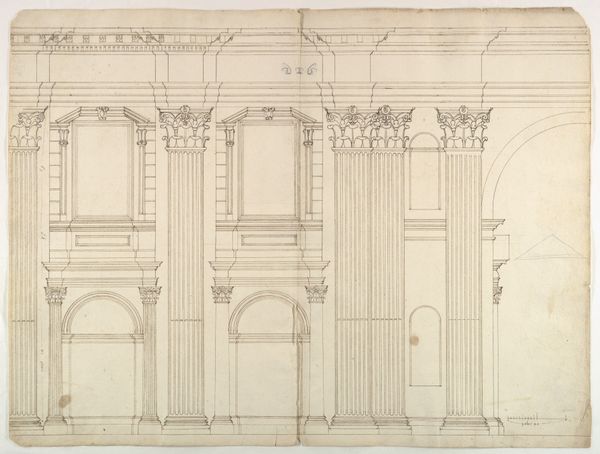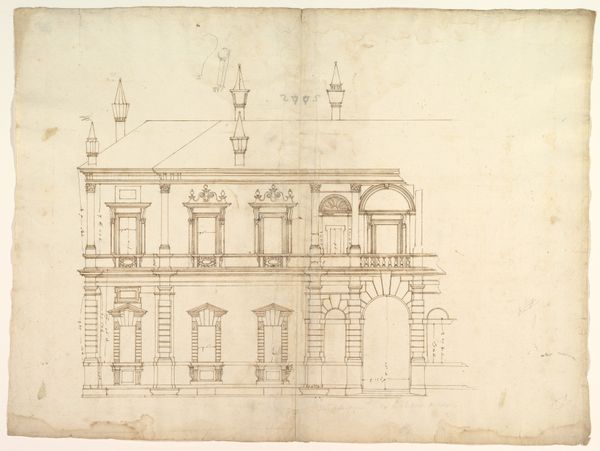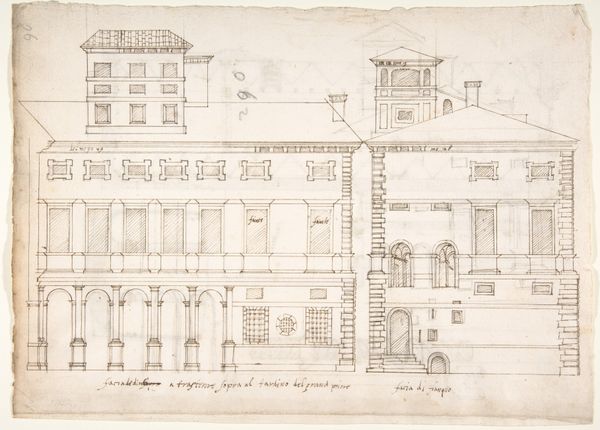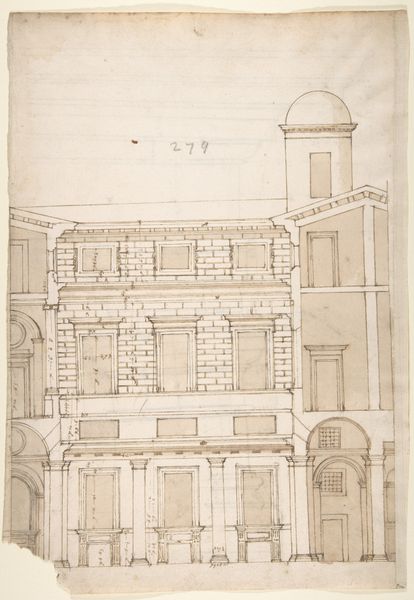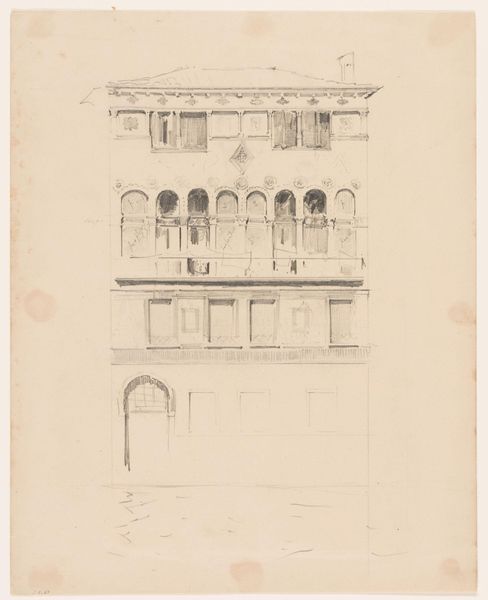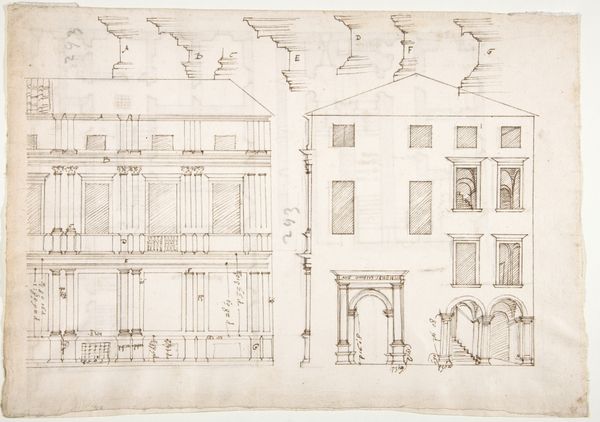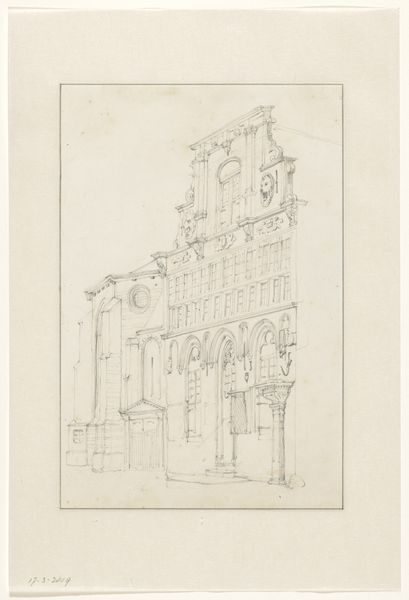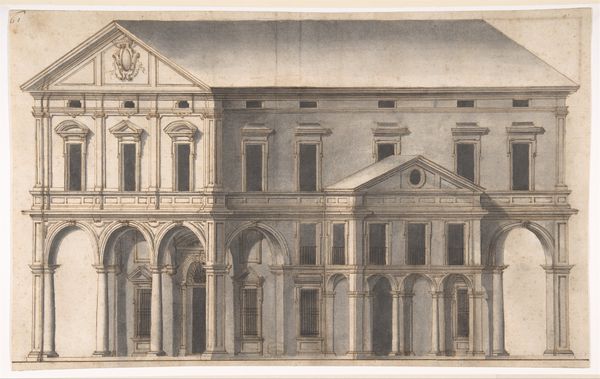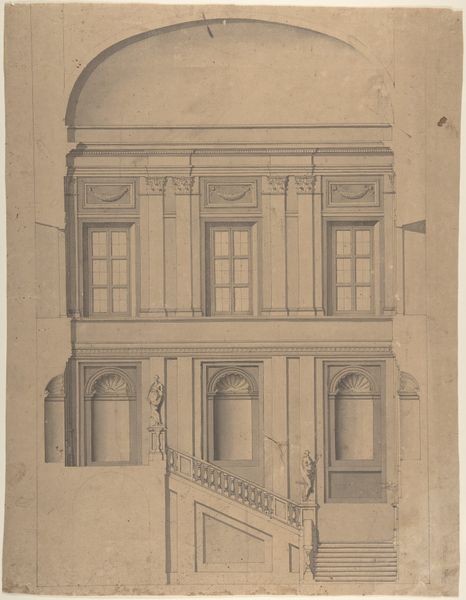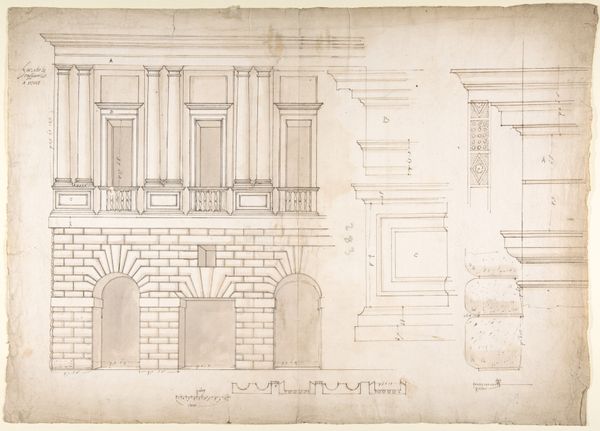
Palazzo Farnese, section (recto) blank (verso) 1500 - 1560
0:00
0:00
drawing, print, ink, pencil, architecture
#
drawing
# print
#
pencil sketch
#
etching
#
11_renaissance
#
ink
#
pencil
#
italian-renaissance
#
architecture
Dimensions: sheet: 17 1/2 x 21 7/8 in. (44.5 x 55.5 cm)
Copyright: Public Domain
Editor: Here we have an architectural study titled "Palazzo Farnese, section (recto) blank (verso)," dating from 1500 to 1560, rendered anonymously with ink, pencil, and etching. It’s currently housed at the Met. I am really struck by how technical it feels; it looks almost like a blueprint. What’s your take on this piece? Curator: Well, beyond the obvious architectural elements, consider the means of production itself. Ink, pencil, etching: these are not the materials of a finished palace, but the tools used to *plan* it. Notice how the lines aren’t necessarily graceful, but functional, pragmatic. This drawing is a record of labor, a document of the collaborative process of building on a massive scale. What does that say about Renaissance ideas of authorship, if we don’t even know who made this plan? Editor: That’s fascinating! I hadn’t thought about it as a record of labor, more as a design concept. So, it’s less about high art and more about the process? Curator: Exactly! Where did the materials come from? Who mixed the ink? Who sharpened the pencils? The finished Palazzo becomes a symbol of power but its creation necessitated the skills and labor of hundreds, even thousands, of unseen hands. That the plan survives, rather than simply the palace itself, allows us to examine the means and materiality, the hidden costs if you will. Do you think viewing the architectural process helps appreciate the end result? Editor: Absolutely. I mean, thinking about where everything comes from – the labor, the materials – really puts the Palazzo itself into a whole different perspective. It moves away from being just a symbol of wealth and power. Curator: Precisely. It is through questioning the apparent simplicity of the work and investigating its production, and the context behind this construction, that we learn its true worth. Editor: I'll definitely remember that approach as I look at other artworks. Thank you!
Comments
No comments
Be the first to comment and join the conversation on the ultimate creative platform.
